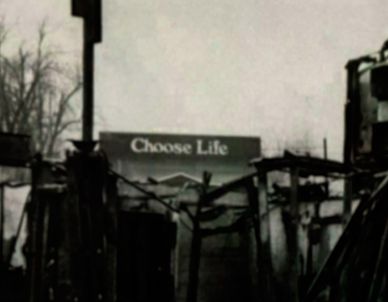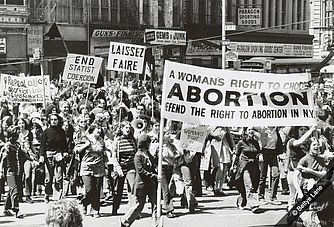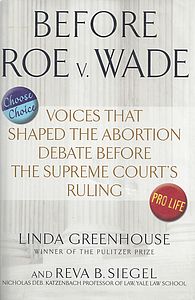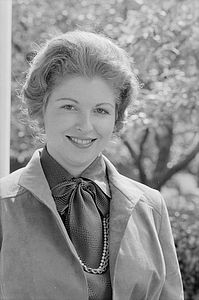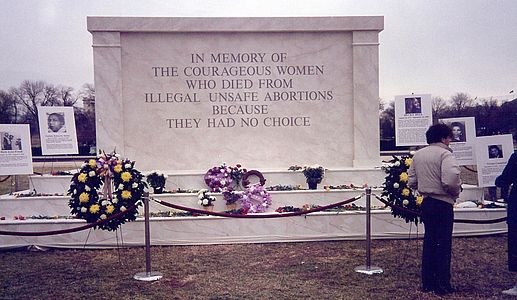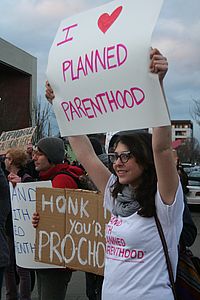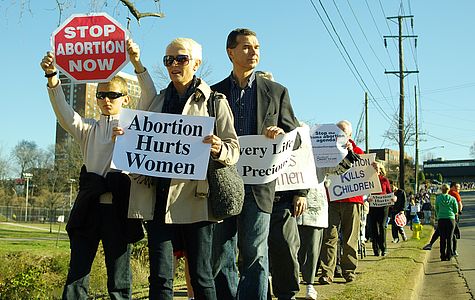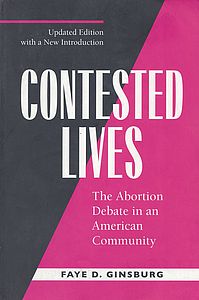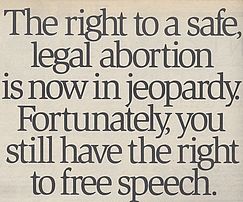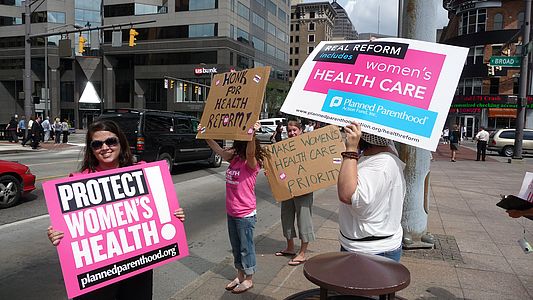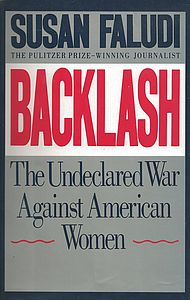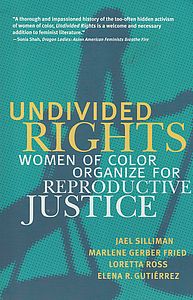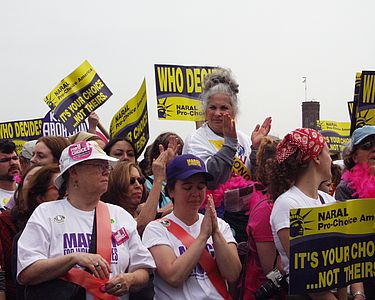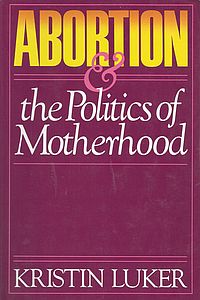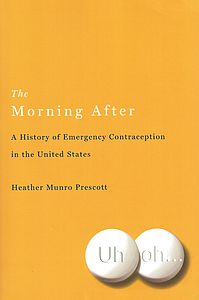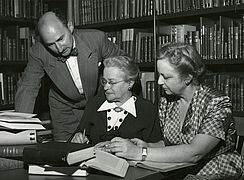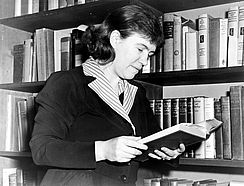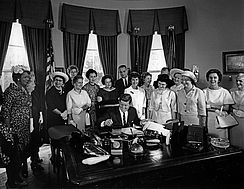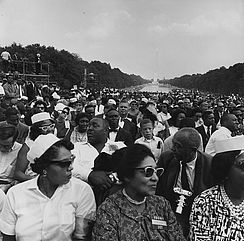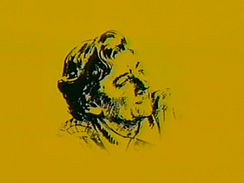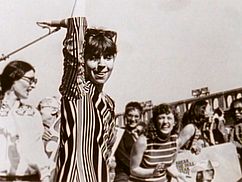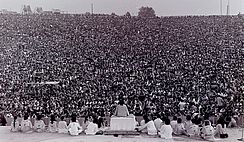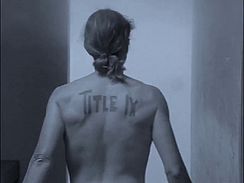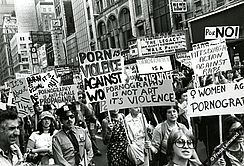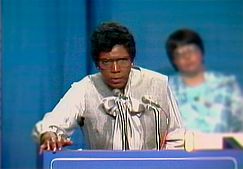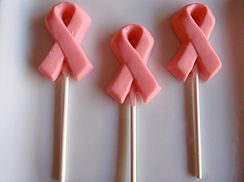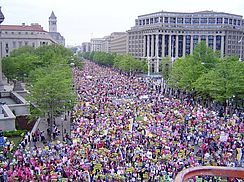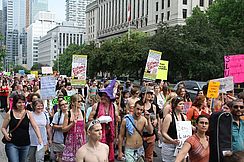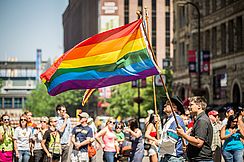Body & Health
Debating Reproductive Rights
In the rancorous debate over abortion rights after Roe v. Wade, the battle escalated into violence including numerous acts of arson.
Excerpt from “Passing the Torch,” a film by Carol King. (Running time 4:07) Used with permission. The complete film is available from King Rose Archives. For more information, visit Veteran Feminists of America.
Even though single women won wider access to birth control in the 1960s and 1970s, sexual activity could still result in unplanned pregnancies, which brought the nation’s abortion laws under scrutiny. The first laws explicitly prohibiting abortion were passed in the late nineteenth century, often restricting abortion to cases where the life of the mother was at risk. As the modern medical profession continued to lay claim to all aspects of women’s reproductive health during the first half of the twentieth century, doctors and hospital review boards became the gatekeepers who decided whether a woman could qualify for a legal “therapeutic” abortion. Very few did. Unplanned pregnancies in turn fed the demand for back-alley abortionists who could charge exorbitant rates and operate under unhealthy, sometimes deadly conditions.
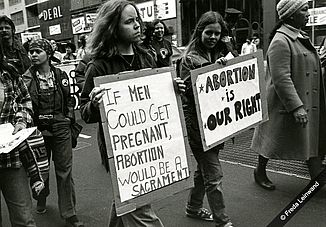
Starting in the 1960s, some doctors began to push for the liberalization of abortion laws. The case of Sherri Finkbine, who had to go to Sweden for a legal abortion in 1962 after inadvertently taking a drug (thalidomide) known to cause severe birth defects, helped galvanize public opinion. In the late 1960s feminists joined doctors in the fight, calling not just for reform of abortion laws but for their outright repeal, as represented in the call for “abortion on demand.” By 1972 sixteen states and the District of Columbia had liberalized their laws.
Roe v. Wade, the far-reaching Supreme Court decision legalizing abortion that was handed down in January 1973, dramatically changed the legal landscape. The plaintiff, a single woman whose name was not given to protect her privacy (later revealed as Norma McCorvey, who caused quite a stir when she came out against abortion in 1995), had been unable to secure an abortion under Texas’s strict restrictions, which allowed abortions only if the life of the mother was in danger. She and her lawyers, including 27-year-old Sarah Weddington, challenged the law, and the case went all the way to the Supreme Court. The court’s seven-to-two decision, which basically made abortion legal in the first trimester and subject to state regulation thereafter, was based on the constitutional right of privacy, which the justices ruled “broad enough to encompass a woman’s decision whether or not to terminate her pregnancy.”
The Supreme Court knew it was entering difficult and uncharted territory: “We forthwith acknowledge our awareness of the sensitive and emotional nature of the abortion controversy, of the vigorous opposing views, even among physicians, and of the deep and seemingly absolute convictions that the subject inspires.” In hindsight, the decision held multiple clues about the future of the abortion battle — and by extension, the fortunes of feminism. It affirmed a woman’s constitutional right to an abortion but mandated that the circumstances under which those abortions could take place would remain firmly in the hands of doctors in medical settings. Furthermore, the distinction between first-trimester and late-term abortions opened the door for states to impose other restrictions on the access and timing of abortion provision.
Forty years later, the Supreme Court still affirms women’s fundamental constitutional right to abortion but has allowed a wide range of restrictions and limits to be placed on that right. An abortion is legal, but you may not be able to find a clinic to perform one. That middle ground is remarkably similar to where popular opinion rests: showing support for women’s right to end a pregnancy but also strong unease about the procedure, especially after the first trimester.
The polarizing effects of Roe v. Wade were seen almost immediately in the political realm. Feminists hailed the right to abortion as a vital cornerstone of women’s ability to control their reproductive choices and their lives, but the decision galvanized opponents and helped to kill the Equal Rights Amendment. In 1976, the U.S. Congress passed the Hyde Amendment, which prohibited the use of federal funds for Medicaid abortions even if they were medically necessary; the Supreme Court upheld this restriction in 1980. Followers of conservative and fundamental religions, including many women, continued to speak out against abortion as antithetical to their vision of family. Meanwhile, groups such as Phyllis Schlafly’s Eagle Forum and Beverly LaHaye’s Concerned Women for America increasingly moved abortion to the forefront of their anti-feminist platform, where it has remained ever since.
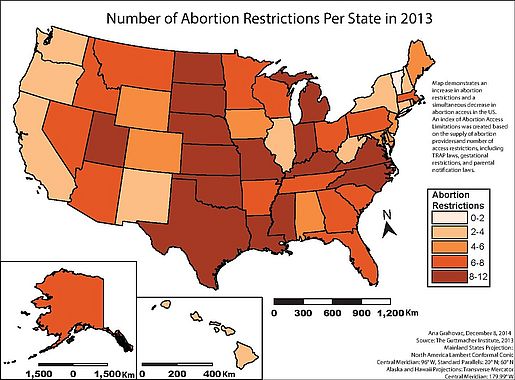
In terms of abortion politics, the 1980s were a period of what Sandra Morgen called the Three Rs: retrenchment, Reagan, and Operation Rescue. The general shift in the political climate to the right after the election of Ronald Reagan in 1980 stalled the momentum for civil rights and feminism. As part of cutbacks in government spending (spurred by the deficit but really as a way to cut programs Republicans thought the government had no business funding in the first place), healthcare and anti-poverty programs were especially hard hit, with deleterious effects on the provision of reproductive services to the nation’s women, especially poor women. Add to that the founding by Randall Terry of Operation Rescue in 1986, which used violence and intimidation outside abortion clinics to try to keep women from entering. The escalating violence, which included clinic bombings, arson, and the murder of abortion providers, led to the passage of the Freedom of Access to Clinic Entrances Act in 1994.
In the 1980s and 1990s, the anti-abortion campaign switched tactics somewhat. Drawing on studies that claimed women were psychologically traumatized by abortion, the movement cleverly translated feminist demands for “informed consent” into a call for increased restrictions on access to abortion as a way to protect women from harm. At the same time, a new focus on the rights of the fetus entered the debate, spurred in part by The Silent Scream, Bernard Nathanson’s anti-abortion video from 1984, which supposedly showed a fetus exhibiting pain during an abortion procedure. Researchers pointed out that the neurological system of a fetus was not well developed enough at that point to identify pain, but the images trumped the science. In fact, the whole expansion of fetal technology, especially the widespread use of sonograms, came together to give increasing weight to the needs and rights of the fetus over the rights of the pregnant woman.
In the meantime the question of abortion continued to be legislated in the states and then adjudicated in the courts. A series of major Supreme Court decisions confirmed the pattern of affirming the general right to abortion while allowing restrictions to chip away at access: Webster v. Reproductive Health Services (1989) allowed Missouri women to terminate a pregnancy as long as no public funds or facilities were involved; Planned Parenthood v. Casey (1992) upheld a series of restrictions including a 24-hour waiting period and parental consent for a minor; and Gonzales v. Carhart (2007) upheld a 2003 law passed by Congress restricting late-term abortions.
As the anti-abortion movement chipped away at access to abortion, in effect making it increasingly difficult to find a legal abortion provider in many parts of the country, supporters of abortion rights found they were fighting battles on many fronts. Susan Faludi’s 1991 bestseller, Backlash: The Undeclared War Against American Women, detailed the shifting political climate. Organizations such as Planned Parenthood and NARAL Pro-Choice America intensified their efforts, raising money, lobbying Congress and statehouses, and on occasion, such as the 1989 March for Reproductive Rights, bringing hundreds of thousands of abortion supporters to the nation’s capital. Women of color played an important role in challenging anti-abortion legislation by highlighting its racial and class implications and broadening the movement for reproductive rights into one for reproductive justice. Rather than holding a “March for Choice” in 2004, an energized and diverse group of activists converged in record numbers for the “March for Women’s Lives.”
Not surprisingly, these political efforts found more favor with Democratic administrations than Republican. The Clinton administration supported the passage of the clinic access bill and directed the Justice Department to aggressively counter abortion violence. Since Barack Obama took office in 2009, restrictions against embryonic stem cell research have been lifted, the international gag order restricting information about birth control techniques in foreign aid has been dropped, and the “morning-after pill” is more widely available without a prescription, even to teenagers. And yet state legislatures as well as Congress continue to add more and more restrictions on the provision of abortion. The irony is that by imposing increasingly stringent regulations on abortion clinics to bring them practically in line with hospitals, abortion provision has now come almost full circle since the early 1960s, when hospitals were the only places where women could have legal abortions and then only with the permission of a panel of doctors.
There is no end in sight to this polarization. Polls show women holding firm allegiance to both sides of the issue, with support strongest for access to abortion in the first trimester (12 weeks) but declining dramatically after that, even among those who claim to be “pro-choice.” There is also widespread support for abortion in the cases of rape and incest, as well as when the life of the mother is threatened.
When the abortion battles are viewed against the backdrop of the revolutionary changes in women’s lives over the past half century, it is clear that many Americans still feel a certain unease about women’s new freedoms, sexual or otherwise. Even though there has been a sea change in attitudes about women’s sexual expression, the ongoing debate over abortion shows that the question of women’s self-determination over their own bodies is far from settled.
How to Navigate our Interactive Timeline
You will find unique content in each chapter’s timeline.
Place the cursor over the timeline to scroll up and down within the timeline itself. If you place the cursor anywhere else on the page, you can scroll up and down in the whole page – but the timeline won’t scroll.
To see what’s in the timeline beyond the top or bottom of the window, use the white “dragger” located on the right edge of the timeline. (It looks like a small white disk with an up-arrow and a down-arrow attached to it.) If you click on the dragger, you can move the whole timeline up or down, so you can see more of it. If the dragger won’t move any further, then you’ve reached one end of the timeline.
Click on one of the timeline entries and it will display a short description of the subject. It may also include an image, a video, or a link to more information within our website or on another website.
Our timelines are also available in our Resource Library in non-interactive format.
Timeline Legend
Yellow bars mark entries that appear in every chapter
This icon indicates a book
This icon indicates a film
1971 The Click! Moment
The idea of the “Click! moment” was coined by Jane O’Reilly. “The women in the group looked at her, looked at each other, and ... click! A moment of truth. The shock of recognition. Instant sisterhood... Those clicks are coming faster and faster. They were nearly audible last summer, which was a very angry summer for American women. Not redneck-angry from screaming because we are so frustrated and unfulfilled-angry, but clicking-things-into-place-angry, because we have suddenly and shockingly perceived the basic disorder in what has been believed to be the natural order of things.” Article, “The Housewife's Moment of Truth,” published in the first issue of Ms. Magazine and in New York Magazine. Republished in The Girl I Left Behind, by Jane O'Reilly (Macmillan, 1980). Jane O'Reilly papers, Schlesinger Library.

